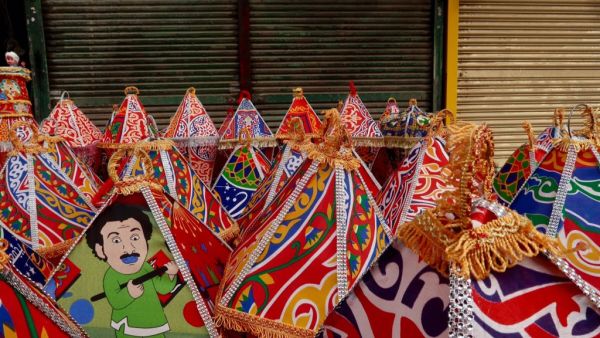With less than a week to go before the holy month of Ramadan begins, families across Saudi Arabia are decorating their homes.
Ramadan is not simply about fasting, communal sahoor meals and night prayers, it is a month in which families and friends celebrate the unity and bonds that are strengthened and promoted during the holy month. Many like to deck their homes out with lanterns, crescent moons, twinkling lights and a plethora of different colorful red, white and blue fabric items.
In pictures: Ramadan decorations appear in Abu Dhabi to welcome the holy month.
— Khaleej Times (@khaleejtimes) April 7, 2021
Photos: Ryan Lim/KT#Ramadan2021 #Ramadan #AbuDhabi #UAE #KhaleejTimes #Fasting #FastingMonth #RamadanInUAE #RamadanDecoration #UAERamadan pic.twitter.com/cfzw1geUuM
Derived from the word khayma (tent in English), khayamiya — decorative appliqué textile bearing distinct geometric and curvilinear arabesque patterns — has historically been used to decorate tents across the Middle East. It is believed to have originated in Egypt and has since made its way across the region. It has become widely popular in recent years, taking the Saudi market by storm, and is now used for tablecloths, cushions, accessories, dresses, prints and more.
The most popular khayamiya design is the “street panel,” which originated no more than 50 yeas ago in the heart of downtown Cairo near Bab Zuwayla, one of the city’s oldest gates — built by the Fatimids in 1092. Numerous shops in nearby Khayamiya Street (Street of the Tentmakers) are adorned with highly artistic khayamiya of all shapes and sizes. According to Jeddah resident Um Al-Saad Mohammed, khayamiya has become popular in Saudi Arabia thanks to Saudi women who have a strong affiliation with Egypt.
Solar pulse... good morning!#installationart #textileart #khayamiya #seeingissacred pic.twitter.com/BS5hhfiSvW
— Picardilly بيكارديلي (@Artwithamirra) August 10, 2020
“As a child, I would often visit Cairo with my parents and my father always took us to Al-Azhar Mosque area, (which had so many) different shops nestled in its market alleyways. Khayamiya Street wasn’t as popular as it is today but I remember that we used to see these large red, white and blue textiles wrapped around large poles waiting to be sold to event planners and such,” she told Arab News.
The large fabric was used for partitions at weddings or other social gatherings — even funerals sometimes — and their attractive design prompted Um Al-Saad and many others to bring them back to the Kingdom to hand out as gifts for family and friends, or even to sell on.
?Photos|| Palestinians decorated alleys of Bab Hatta neighborhood in Occupied Jerusalem with distinctive Ramadan decorations. Watch ?? pic.twitter.com/Hpv4O8S7pf
— MSDR NEWS (@NewsMsdr) April 7, 2021
Nowadays, shops and stores across Saudi Arabia sell everything from plastic cups, cutlery, tablecloths and teapot covers to triangular streamers decorated with the distinctive red, white and blue designs that will flood the market in the month ahead. For many Saudis, it’s a flourish of vibrant color that brings an added sense of joy to a month of celebration with their loved ones.
This article has been adapted from its original source.








